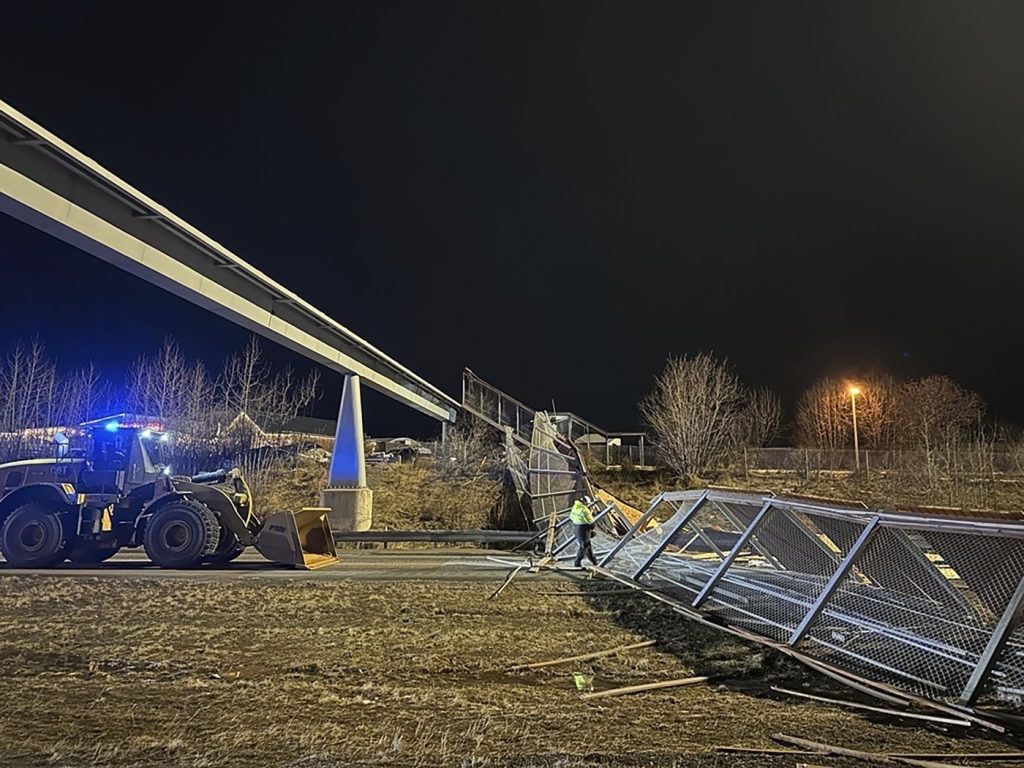ANCHORAGE, Alaska (AP) – Early Sunday morning, strong winds led to the collapse of the side fencing and roof of a pedestrian bridge, causing the closure of the Seward Highway in both directions. This incident occurred in Anchorage, Alaska's largest city, and fortunately, no injuries were reported.
The Alaska Department of Transportation & Public Facilities confirmed that a highway worker spotted the debris on the roadway at approximately 2:30 a.m. Traffic was immediately rerouted as crews responded to the scene. By 6:30 a.m., the debris had been successfully cleared from the highway, according to department spokesperson Shannon McCarthy.
While it is still too early for a thorough investigation into the cause of the bridge's collapse, initial assessments suggest that the strong winds played a significant role. The winds recorded at the time surpassed 20 mph (32 kilometers per hour), and the National Weather Service had issued forecasts predicting even heavier weather later in the day, with winds anticipated to exceed 60 mph (96 kilometers per hour).
The pedestrian bridge is a vital structure that connects a local neighborhood to an elementary school. Although the side fencing and roof collapsed, the main structure of the bridge—spanning the four-lane highway as well as an entrance ramp and another roadway—remained intact. This remained a crucial point of safety for pedestrians, ensuring minimal disruption to accessibility in the area.
As heavy rain, snow, and gusty winds were forecasted for later in the day, the response by the transportation department was swift in managing the situation and clearing the highway to prevent any further complications for commuters. McCarthy emphasized the department's commitment to assessing the condition of the remaining bridge structure and ensuring public safety.
Images released by the Alaska Department of Transportation & Public Facilities revealed the extent of the damage, showcasing the compromised fencing and roof that fell onto the highway. The event underscored the importance of infrastructure resilience in the face of adverse weather conditions, as Alaska frequently experiences severe climatic variations.
This incident highlights the need for continuous monitoring and maintenance of infrastructure, especially in regions prone to extreme weather. With forecasts warning of worsening conditions, residents and travelers alike are urged to stay informed and exercise caution while navigating these potentially hazardous roads.










